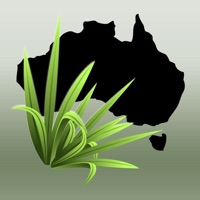
投稿者 投稿者 LucidMobile
1. We are grateful to Anthony Orchard for lending his expertise on Cassinia to this project; Nunzio Knerr for helping with the generation of distribution maps; Miguel de Salas for helpful discussions on the distribution of several species in Tasmania; the herbaria AD, BRI, HO, NE, NSW, and PERTH for making available specimens for study; and Parks Australia for funding through the Bush Blitz Applied Taxonomy grant scheme.
2. The following characters may be particularly useful for quickly narrowing down the possibilities during identification: capitulescence size, capitulescence structure, leaf dimensions, leaf shape, indumentum (hairs) of young leaves and stems, flowering head dimensions, whether involucral bracts are straight or radiating, and, in particular for smaller flowering heads, the number of flowers per head.
3. (Note that leaf hairs refer to the surfaces, that is excepting hair types found only in the mid-rib groove on the upper side of young leaves.) Colour, texture or transparency of involucral bracts are somewhat more subjective and should be used with care, as their interpretation may differ a bit from person to person.
4. The key was produced by CSIRO scientist Alexander Schmidt-Lebuhn and Kirsten Cowley at the Australian National Herbarium (CANB) through funding from the Bush Blitz Applied Taxonomy grant scheme.
5. As currently circumscribed the group comprises the large genera Cassinia and Ozothamnus as well as the small satellite genera Apalochlamys, Calomeria, Haeckeria, Ixodia, Odixia and Paenula.
6. They represent approximately one fifth of the species of the Australian Gnaphalieae, also known as the cudweed or everlasting paper daisy tribe, and are generally woody plants with a centre of diversity in south-eastern Australia.
7. All morphological characters are illustrated, species are illustrated and have distribution maps, and the key provides species profiles and links to the Atlas of Living Australia.
8. Below the character list the user will find options for taxonomic or geographic subselection, allowing for example to restrict the key to Tasmanian Ozothamnus, if so desired.
9. An illustrated multi-access key to the species of the Cassinia group (Asteraceae: Gnaphalieae).
10. Also not covered at this moment are the three informal phrase name taxa Ozothamnus sp.
11. Most of these genera appear to be phylogenetically nested in Ozothamnus sect.
または、以下のガイドに従ってPCで使用します :
PCのバージョンを選択してください:
ソフトウェアのインストール要件:
直接ダウンロードできます。以下からダウンロード:
これで、インストールしたエミュレータアプリケーションを開き、検索バーを探します。 一度それを見つけたら、 Key to the Cassinia group を検索バーに入力し、[検索]を押します。 クリック Key to the Cassinia groupアプリケーションアイコン。 のウィンドウ。 Key to the Cassinia group - Playストアまたはアプリストアのエミュレータアプリケーションにストアが表示されます。 Installボタンを押して、iPhoneまたはAndroidデバイスのように、アプリケーションのダウンロードが開始されます。 今私達はすべて終わった。
「すべてのアプリ」というアイコンが表示されます。
をクリックすると、インストールされているすべてのアプリケーションを含むページが表示されます。
あなたは アイコン。 それをクリックし、アプリケーションの使用を開始します。
ダウンロード Key to the Cassinia group Mac OSの場合 (Apple)
| ダウンロード | 開発者 | レビュー | 評価 |
|---|---|---|---|
| Free Mac OSの場合 | LucidMobile | 0 | 1 |

Environmental Weeds Australia

Rice Doctor

Sweetpotato DiagNotes

Central American Malaria Vectors

Pacific Pests Pathogens Weeds

Google 翻訳
KnowMe-AIフェイスエディターとクイズ
Papago - AI通訳・翻訳
翻訳 - 今すぐ翻訳
DeepL翻訳
漢字検索
トリセツ-取扱説明書管理アプリ
英語翻訳機-英文翻訳と英語勉強翻訳辞書
漢字辞典 - 手書き漢字検索アプリ
Weblio英語辞書 - 英和辞典 - 和英辞典を多数掲載
Weblio国語辞典 - 辞書や辞典を多数掲載
U-翻訳&辞書-翻訳機
翻訳王- タップde辞書!OCRスキャンアプリ
韓国語翻訳-韓国語写真音声翻訳アプリ
vpn-快喵vpn